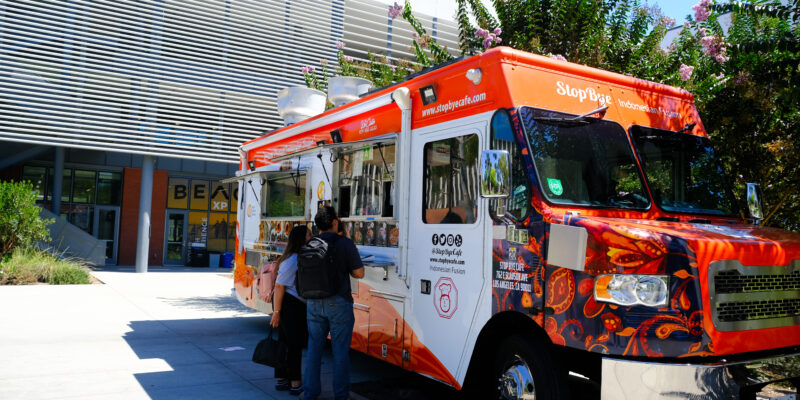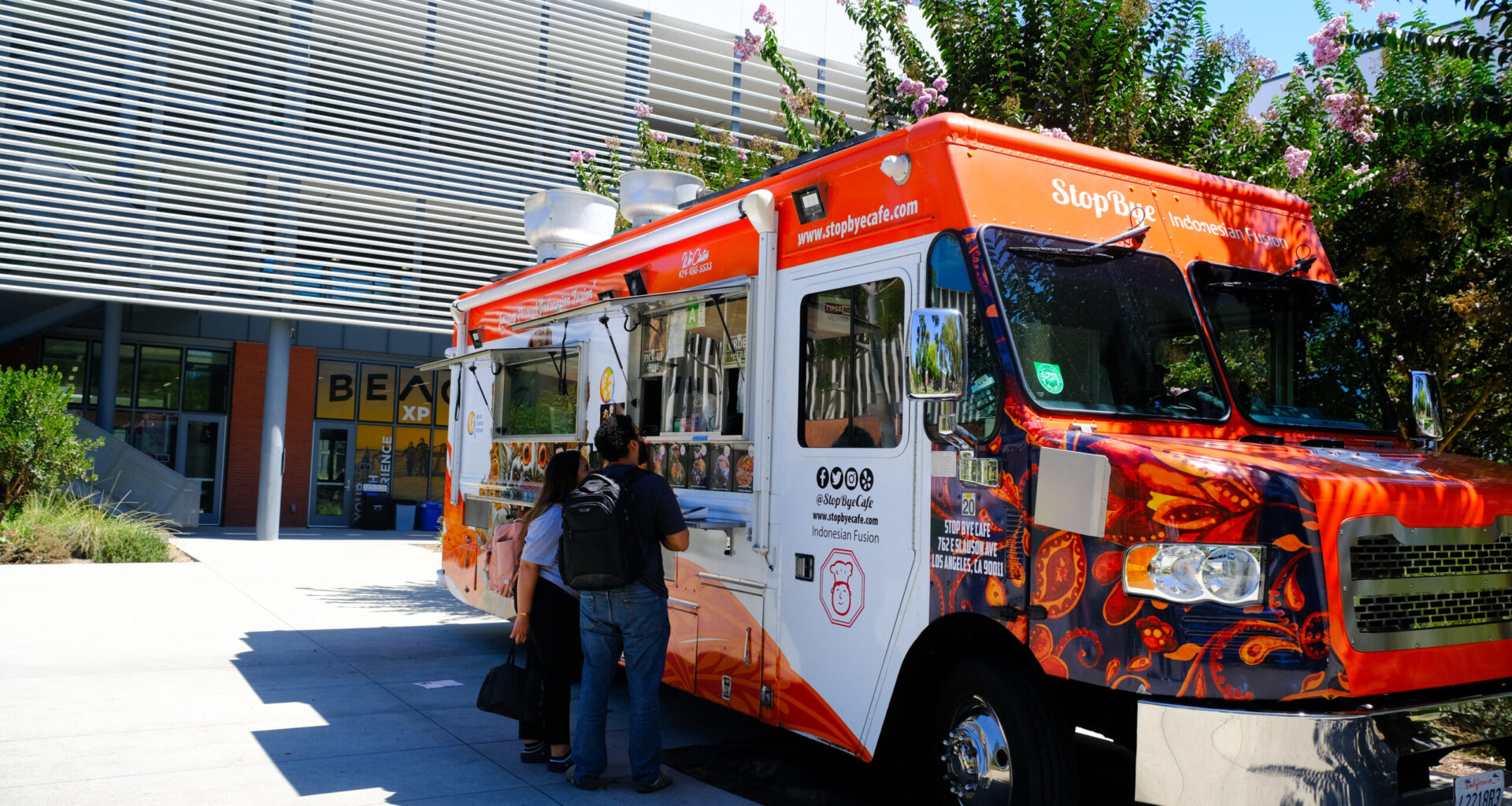
StopByeCafe is an Indonesian Fusion food truck that has prices ranging from $3 to $13, parked on the lower side of campus on Sept. 4. Charlotte LoCicero | Long Beach Current
Gone are the days of El Pollo Loco’s Street Corn Chicken Bowl, Subway’s customizable sandwiches and Carl’s Jr.’s “More Bang, Less Buck” value menu on campus.
The 2025-26 academic year at Long Beach State brings us vending machines, food trucks and farmers’ market vendors who pack up before 2 p.m.
Despite the university’s attempts to provide food options, they haven’t quite hit the spot.
There are a couple of missing ingredients in the food merchant stew the school put together.
Convenience and price.
I wish not to cape for big fast food, but the restaurants inside the University Student Union had affordable prices and supported mobile ordering.
During my first semester at CSULB, I’d fire up the El Pollo Loco app and place an order to be ready for pickup by the time my class let out. I did all this before class started, of course.
I rarely exceeded $10 or 10 minutes to get lunch in hand. Nowadays, the 10-10 club is a thing of the past.
The Outpost Grill, PizzaForno vending machine, farmer’s market and various food trucks are all located on lower campus—which has limited seating capacity.
That puts our well-rounded students based in upper campus at a severe disadvantage, especially the ones who have classes, club meetings and events to attend.
Another impacted demographic is the students who are in class late morning and early afternoon. Once the clock hits 2 p.m., many of the friendly faces you see feeding the public are gone.
In its place are the convenience stores, such as the Beach Hut, and the ones inside the Outpost and bookstore.
The Beach Hut offers refrigerated food in the form of salads and sandwiches, but those convenience stores get congested, and the people yearn for “fresh and hot” food.
In order to get something hot, we are limited to instant ramen and the InstaChef vending machine, which heats pre-packaged meals.
The USU’s food court was not simply a hangout spot—it was a reliable place to grab a meal for all students, regardless of their schedule.
None of the options provided on campus are friendly to students’ wallets. The vendors understandably have a bottom line, but eating consistently on campus will add up.
Other schools in the state have made remarkable strides in feeding their students. UC Davis has a food truck that offers free and healthy meals every weekday. Students have the liberty to pay any price.
Fullerton College students can scan their student ID to receive a free meal that includes a bottle of water and a bag of chips.
Prior to fall 2024, Fullerton students had a daily $12 credit in the cafeteria that could be used on food, snacks, drinks or coffee.
When funding for that program ran out, Fullerton remained committed to alleviating that financial stress by continuing to provide free meals—just in a different manner.
Another option the school threw at us is the Beach Community Meal Bundle. The menu is vast and accommodating of dietary restrictions, but reaching the dining halls is somewhat of a voyage.
Taking a shuttle bus to get to one of the dining halls is not ideal.
The university’s plan to mix in a bunch of dining options has not bore much fruit.
When the Nugget Grill & Pub returns in 2028 alongside the new USU, it will surely be a success, but until then, the school must continue to figure out how to do a better job at feeding the current student body.

